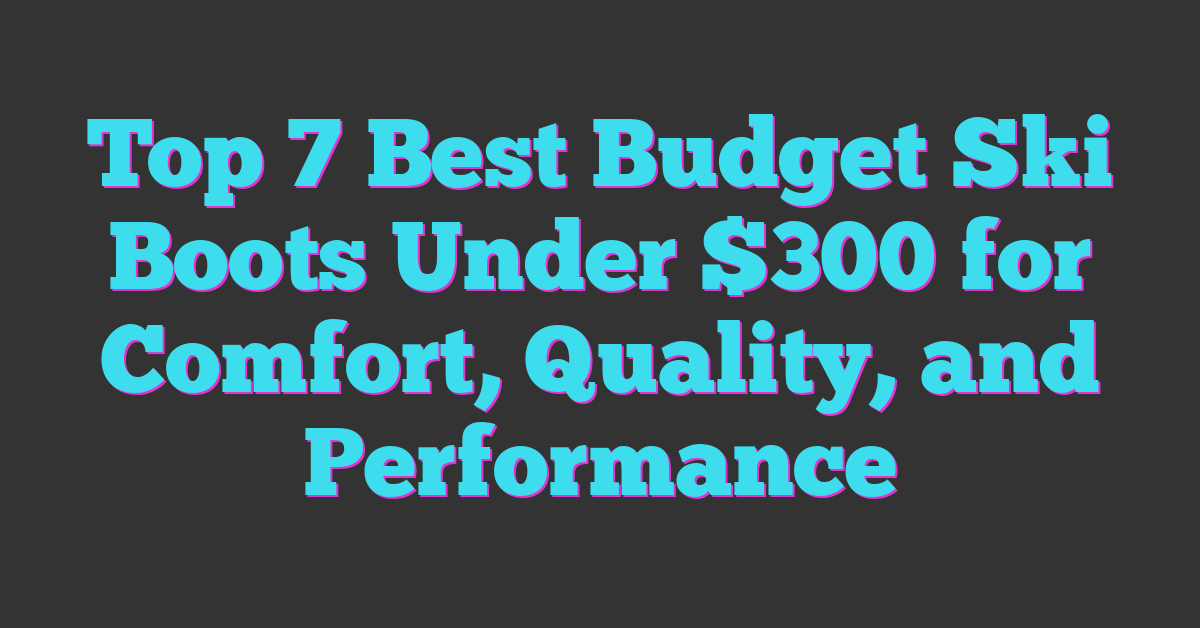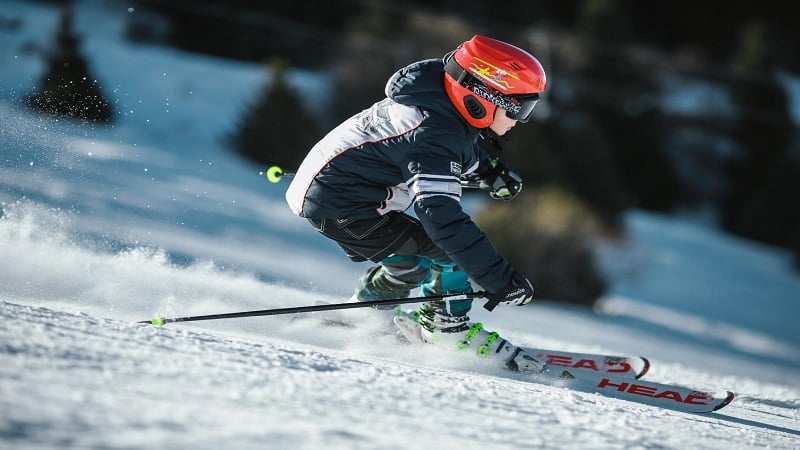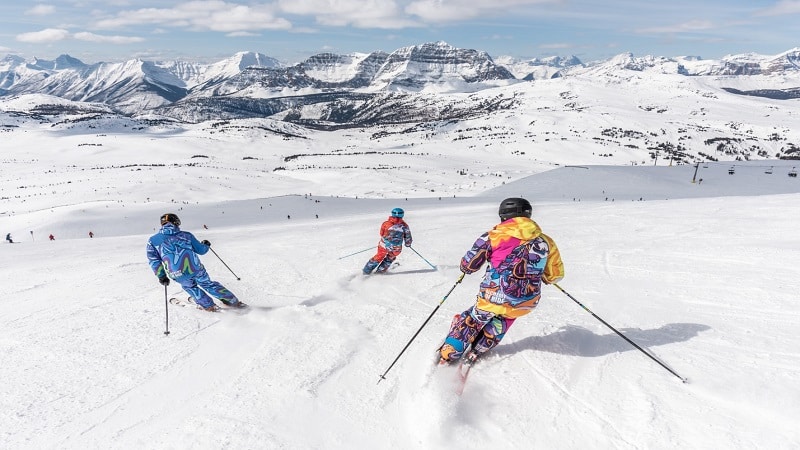Skiing doesn’t have to break the bank, especially when it comes to finding the right gear. I know how overwhelming it can be to shop for ski boots, especially with so many options out there. But trust me, you don’t need to spend a fortune to get a pair that’s comfortable, durable, and ready for the slopes.

Why Choose Budget Ski Boots?
Skiing shouldn’t break the bank, and budget ski boots let more people experience the slopes without overspending. Finding options under $300 doesn’t mean compromising on comfort or quality. I’ve seen well-priced boots packed with features that cater to beginners and intermediate skiers alike.
Budget ski boots often focus on usability, making them great for those developing skills or skiing occasionally. Many budget models, like the Salomon Quest Access 70, prioritize a softer flex, which is ideal for improving control and reducing foot fatigue. These boots provide stability and ease of movement, essential for building confidence on varied terrains.
Durability is another highlight, especially in this price range. Brands often invest in sturdy materials like polyurethane shells or customizable liners that offer solid performance season after season without showing heavy signs of wear. In my experience, some less expensive boots can last just as long as pricier alternatives.
Affordability also opens up opportunities to spend on other gear like skis or helmets. Skiing demands reliable equipment, and saving on boots frees up resources for equally important investments. It’s a practical way to balance cost with the essentials for a safe and enjoyable ride.
Key Features To Look For In Ski Boots
Finding the right pair of ski boots is essential for a great day on the slopes. Even on a budget, it’s possible to get ski boots that fit well, perform reliably, and keep your feet warm.
Fit And Comfort
A secure and precise fit enhances control and reduces discomfort. I always look for boots with proper sizing, considering both length and width (measured in Mondopoint). Features like customizable liners or heat-moldable technology provide a tailored fit, while adjustable buckles ensure the boots feel snug but not restrictive. An ill-fitting boot can ruin a day of skiing.
Flex Rating
Flex rating directly impacts boot performance. Beginner and intermediate skiers often benefit from a softer flex rating between 50 and 90, which offers more forgiveness and control. These options help absorb shocks and are less demanding on leg strength. For more advanced skiers seeking budget boots, a medium flex of 90 to 110 offers better responsiveness without being overly stiff.
Build Quality
Durable materials matter, even in affordable models. I check for sturdy shell construction, often made from polyurethane or other high-strength plastics, to ensure they handle impacts and wear over multiple seasons. Reinforced buckles and robust soles with good grip enhance longevity and performance during resort or backcountry skiing.
Insulation And Warmth
Cold feet can spoil the experience fast. I seek boots with effective insulation, such as Thinsulate or wool liners, which retain warmth even in frigid conditions. If warmth is a priority, insulated, moisture-wicking liners maintain dryness and keep my feet cozy all day.
Top Picks For Best Budget Ski Boots Under $300
I’ve spent countless hours on the slopes testing gear, and finding great ski boots under $300 is entirely possible. Below are my top choices to help you gear up without breaking the bank.
Best All-Around Ski Boots
The Rossignol Evo 70 stands out as my favorite all-around option. It combines comfort, performance, and affordability, making it ideal for a variety of conditions. With a forgiving flex rating of 70 and a snug, anatomically-shaped liner, it provides excellent control and warmth for beginner to intermediate skiers. The three-buckle design ensures secure foot hold while simplifying adjustments.
Best For Beginners
For those just starting out, the Salomon X Access 60 Wide is unbeatable. It prioritizes comfort with an extra-wide 104mm last and a soft flex rating of 60, perfect for learning basic techniques. The simple two-buckle system and customizable features make it incredibly user-friendly. Beginners will appreciate the lightweight construction that reduces foot fatigue during long days on green and blue runs.
Best For Intermediate Skiers
Intermediate skiers looking for better responsiveness will love the Dalbello DS MX 80. With an 80 flex rating and a multilayer construction, it’s designed to provide control without overwhelming less experienced skiers. The Cabrio design ensures a smooth flex pattern, and the pre-molded liner adds both comfort and warmth. It’s a solid pick for those honing their skills on more challenging terrain.
Best For Versatility
The Nordica Cruise 70 delivers unmatched versatility. Its adjustable cuff profile adapts to different calf shapes, making it a great fit for various body types. A flex rating of 70 strikes the balance between a supportive and forgiving ride, while the Comfort Fit liner keeps feet cozy in variable conditions. I’ve taken these boots through everything from groomers to slushy spring snow, and they’ve never let me down.
Tips For Buying Budget Ski Boots
Finding the right budget ski boots evokes the same excitement as carving down a powdered slope. It’s all about balancing comfort, performance, and cost without compromising your experience on the mountain. Here’s how I approach it:
How To Ensure The Right Fit
A snug fit is critical for control and comfort. I always start by measuring both feet accurately, as sizes can vary between brands. Ski boots should feel tight but not restrictive—your toes should barely graze the front.
I recommend checking for proper heel hold by standing in a ski stance; your heel shouldn’t lift. Boots with heat-moldable liners are perfect for achieving a personalized fit, especially if you experience pressure points. Adjustable buckles also help tweak the fit throughout the day as conditions change.
Don’t forget to try on boots with your ski socks, as thicker or thinner socks can alter the fit. Spending time finding the right fit upfront saves you from discomfort on the slopes.
When To Replace Your Ski Boots
I pay close attention to signs of wear on my boots, as aged equipment affects both safety and performance. Cracked shells, worn soles, or damaged buckles indicate the need for replacement.
Another factor is performance degradation. If I notice a loss of responsiveness or control, it’s often due to over-flexed components or worn liners. Even with little visible damage, I consider replacing boots every 5-7 seasons, as materials degrade over time.
If you’re stepping into newer skis or progressing your skills, swapping older boots for something more aligned with your level can enhance your skiing experience. Always inspect boots at the start and end of every season.
Conclusion
Finding the perfect pair of ski boots on a budget doesn’t have to be stressful. With so many great options under $300, it’s totally possible to enjoy comfort, durability, and performance without overspending. The key is to prioritize fit, flex, and warmth while keeping your specific skill level in mind.
Budget boots are a fantastic way to hit the slopes confidently while saving money for other essential gear. Whether you’re a beginner or an intermediate skier, the right pair of boots can make all the difference in your skiing experience. So take your time, try on a few pairs, and get ready to enjoy the season without breaking the bank!
















